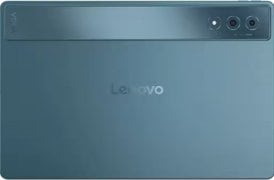- Home
- Telecom
- Telecom News
- TRAI and DoT Approve Implementation of Feature to Display Caller Names During Incoming Calls
TRAI and DoT Approve Implementation of Feature to Display Caller Names During Incoming Calls
CNAP will be offered as a supplementary service together with or in association with a basic telecom service.

Photo Credit: Pexels
The proposal was first made by TRAI in 2022
The Telecom Regulatory Authority of India (TRAI) on Monday approved a proposal by the Department of Telecommunications (DoT), which mandates the name of the caller to be displayed as the default on the receiver's phone. The feature, called Calling Name Presentation (CNAP), will leverage the caller's information registered after verifying their identity during the SIM registration process. It will be a supplementary service offered in association with a basic telecom service.
Caller ID for Incoming Calls
According to TRAI, the CNAP service will be enabled for all telecom subscribers in India by default. If any party does not wish to access the feature, they may request their telecom service provider (TSP) to disable it. Once rolled out, it will display the name and identity information of the calling party on the called party's smartphone, without leveraging any third-party application, such as TrueCaller.
Such a measure is claimed to help the called party make an informed decision about taking the call. Further, TRAI said that it could help in curbing unwanted spam calls. Currently, only mobile or landline numbers are displayed as Calling Line Identification (CLI) during incoming calls, with no mandate for CNAP.
Presently, in Indian Telecom Networks, only the mobile/ landline numbers are being displayed as Calling Line Identification (CLI) during incoming calls. There is no mandate in the license for providing CNAP supplementary services.
The telecom watchdog said that each access service provider will establish and operate a Calling Name (CNAM) database comprising the subscriber's name against their telephone number. When a phone call is received, the terminating access service provider will query its Local Number Portability Database (LNPD) to determine the originating access service provider of the call.
Prior to its nationwide rollout, the DoT has carried out a trial and assessment of the implementation of the CNAP service for 4G and 5G networks by telecom operators in select cities. It was initially set to be tested for both circuit-switched and packet-switched networks. However, TSPs reported various technical issues, such as the non-availability of software patches and the requirement for technical upgrades. Therefore, its testing was only conducted for packet-switched networks.
CNAP will be offered as a supplementary service together with or in association with a basic telecom service that may be common to a number of TSPs, as per TRAI. However, CNAP will not be offered as a standalone service.
Get your daily dose of tech news, reviews, and insights, in under 80 characters on Gadgets 360 Turbo. Connect with fellow tech lovers on our Forum. Follow us on X, Facebook, WhatsApp, Threads and Google News for instant updates. Catch all the action on our YouTube channel.
Related Stories
- Samsung Galaxy Unpacked 2025
- ChatGPT
- Redmi Note 14 Pro+
- iPhone 16
- Apple Vision Pro
- Oneplus 12
- OnePlus Nord CE 3 Lite 5G
- iPhone 13
- Xiaomi 14 Pro
- Oppo Find N3
- Tecno Spark Go (2023)
- Realme V30
- Best Phones Under 25000
- Samsung Galaxy S24 Series
- Cryptocurrency
- iQoo 12
- Samsung Galaxy S24 Ultra
- Giottus
- Samsung Galaxy Z Flip 5
- Apple 'Scary Fast'
- Housefull 5
- GoPro Hero 12 Black Review
- Invincible Season 2
- JioGlass
- HD Ready TV
- Laptop Under 50000
- Smartwatch Under 10000
- Latest Mobile Phones
- Compare Phones
- Redmi Note 15 5G
- Redmi Note 15 Pro 5G
- Redmi Note 15 Pro+ 5G
- Lava Play Max
- Poco C85 5G
- Honor Magic 8 Lite
- Jolla Phone
- Realme P4x 5G
- Asus ProArt P16
- MacBook Pro 14-inch (M5, 2025)
- OnePlus Pad Go 2
- Poco Pad M1
- Just Corseca Skywatch Pro
- Honor Watch X5
- Acerpure Nitro Z Series 100-inch QLED TV
- Samsung 43 Inch LED Ultra HD (4K) Smart TV (UA43UE81AFULXL)
- Asus ROG Ally
- Nintendo Switch Lite
- Haier 1.6 Ton 5 Star Inverter Split AC (HSU19G-MZAID5BN-INV)
- Haier 1.6 Ton 5 Star Inverter Split AC (HSU19G-MZAIM5BN-INV)
















